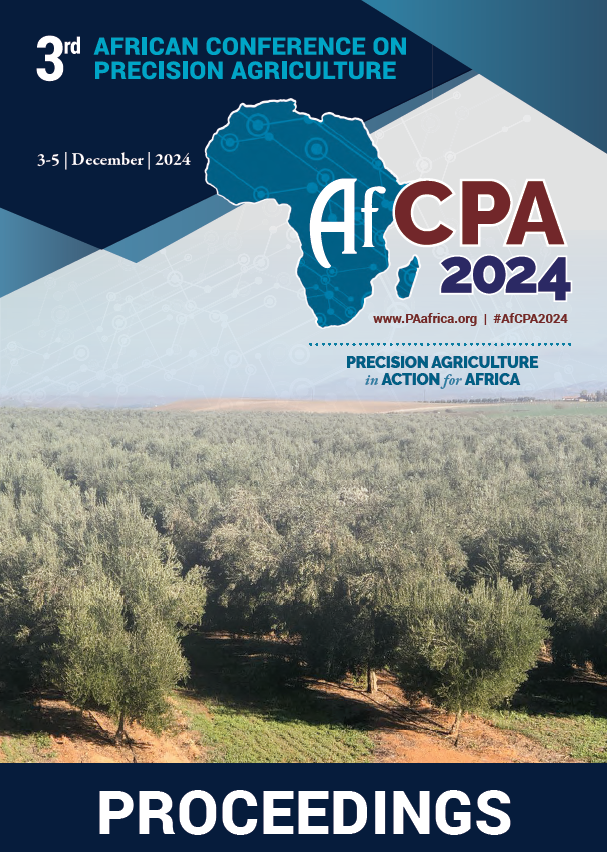Download the Conference Proceedings
Proceedings
Authors
| Filter results4 paper(s) found. |
|---|
1. Biochar and/or Compost for Soil Quality and Maize Yield Improvement in an Acidic Ferralsol Soil in Kenya.The rapidly increasing global population, climate change and dwindling resources have made it very difficult to meet global food demand. To address the issue of food insecurity, sustainable intensification of agriculture (SIA) has been proposed. However, the consequences of poorly managed agricultural intensification can negatively affect the ecosystem. Biochar and compost application has been widely recommended as a highly promising soil fertility replenishment option to promote sustainable agriculture.... |
2. Assessment of Nitrogen and Phosphorus Content (NP) in Citrus Trees Using UAV-imagery Derived Vegetation Indices and Machine Learning AlgorithmsMonitoring nutrient status of citrus trees is fundamental to ensure optimum fruit yield and quality. However, this task is traditionally time-consuming and laborious. Unmanned Aerial Vehicles (UAVs), with their high temporal and spatial resolution imagery, are demonstrating a great potential to substitute traditional methods in assessing nutrient status of several crops, including citrus. In this study, we evaluated the performance of vegetation indices (VIs) derived from UAV multispectral images... Z. Abail, H. Benaouda, M. Chikhaoui, H. Benyahia, O. Iben halima, M. Baraka, A. Douaik, H. Iaaich, A. Zouahri, F. Omari |
3. Recommandation De Formules De Fertilisation Site-spécifique Pour La Production Du Maïs Dans La Région Des Savanes Du TogoDans le contexte actuel de la dégradation des terres agricoles et des difficultés de disponibilité et d'accès aux intrants agricoles en particulier les engrais, la maximisation de l'efficience d'utilisation des nutriments en nutrition des plantes devient plus que jamais une nécessité. Nous avons conduit en 2020 sous culture de maïs (Zea mays L.), des essais soustractifs à base de l'azote (N), du phosphore (P) et du potassium... M. Lare, J. Sogbedji, K. Lotsi, K. Amouzou, A. Ale gonh-goh, A. Agneroh |
4. A Comparative Estimation of Maize Leaf Moisture Content on Smallholder Farming Systems Using Unmanned Aerial Vehicle (UAV) Based Proximal Remote SensingUnderstanding maize moisture conditions is necessary for crop monitoring and developing early warning systems to optimise agricultural production in smallholder farms. Therefore, this study evaluated the utility of UAV derived multispectral imagery and machine learning techniques in estimating maize leaf moisture indicators; equivalent water thickness (EWT), fuel moisture content (FMC) and specific leaf area (SLA). The results illustrated that both NIR and red-edge derived spectral variables were... S. Ndlovu |
